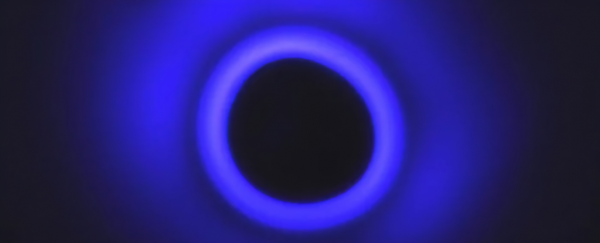Plasma, one of the four fundamental states of matter, is tricky stuff. Just like gas, plasma has no fixed shape or volume, so it usually has to be contained to be useful - as in plasma TVs, for example.
But now, for the first time, researchers have found a way to create a stable plasma ring in the open air, and they think their discovery has potential for energy storage.
Using a thin jet of water and a crystal plate, engineers from Caltech found that they could create the shape without any container, and maintain it indefinitely.
"We were told by some colleagues this wasn't even possible," said co-author Francisco Pereira of the Marine Technology Research Institute in Italy.
"But we can create a stable ring and maintain it for as long as we want, no vacuum or magnetic field or anything."
The team tried the experiment using two different kinds of crystal plates, quartz and lithium niobate. Both of these induce something called the triboelectric effect: that is, with enough friction from another material, an electric charge is generated.
You may have experimented with this effect in science classes at school - by rubbing a glass rod with a piece of silk to generate static electricity, or by rubbing a balloon against your hair.
You need a lot of friction to generate plasma, and that's what the fast jet of water is for. It's just 85 microns wide - less than a human hair - and it blasts from a specially designed nozzle at a pressure of 9,000 pounds per square inch (632.7 kilograms per square centimetre).
It strikes the plate with an impact velocity of 1,000 feet per second (304.8 metres per second) - around the same speed, the researchers said, as a bullet from a handgun.
As the water hits the negatively charged plate, it creates a smooth, even flow of positively charged ions over the surface. At the point where the water strikes the plate, the triboelectric effect causes a high flow of electrons to the surface, where they ionise the atoms and molecules in the air.
This, in turn, generates a torus of glowing plasma, which will remain stable as long as the water continues to flow.
Researchers from the University of Missouri accomplished a similar feat in 2013, with a device that launches plasma rings into the open air. However, those rings were not stable, lasting just 10 milliseconds.
The Caltech team also noticed an unusual side effect - radio frequency interference, causing static in their cell phones.
"That's never been seen before. We think it's because of the piezo properties of the materials that we used in our experiments," Pereira said.
Although no immediate commercial applications seem viable, the team has applied for a patent. They believe a stable, open air plasma ring has potential for energy storage.
While we're waiting for that day, we can enjoy the video of their experiment (above) and bask in the neon glow of science in action.
The paper was published in PNAS.
